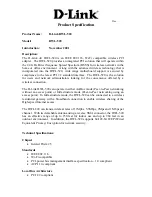
User's Guide
DIGI96/8 PST © RME
22
14.2 Buffer Size - Latency
The Buffer Size value in the RME DIGI Settings dialog determines the latency (in this case the
delay) between the audio application and the DIGI96 series as well as general system stability.
The higher the value, the more tracks can be recorded and played back simultaneously, and
the longer the system takes to react.
The indicated bit resolution is independent from the chosen bit resolution in Cubase. Selecting
16 bit in the driver and 24 bit in Cubase will cause Cubase to record 16 bit data and 8 bit ze-
roes. Selecting 24 bit in the driver and 16 bit in Cubase, the bits 17 to 24 get lost (which only
matters if they included information at all).
Please note that the latency setting describes only one way. The complete path through the
computer (record plus playback, monitoring) gives double values.
More information on how to set up the latency under ASIO can be found in chapter 9.4,
Tab
'Mode'
.
14.3 Known problems
In case the used computer has no sufficient CPU-power and/or sufficient PCI-bus transfer ra-
tes, then drop outs, crackling and noise will appear. We also recommend to deactivate all Plu-
gIns to verify that these are not the reason for such effects.
Unfortunately some newer UltraATA66 and UltraATA100 hard disk controller (also Raid control-
ler) seem to violate against the PCI specs. To achieve the highest throughput they hog the PCI
bus, even in their default setting. Thus when working with low latencies heavy drop outs (clicks)
are heard. Try to solve this problem by changing the default setting of the controller (for e-
xample by reducing the 'PCI Bus Utilization').
Another typical source of trouble is wrong synchronization. ASIO does not support asynchro-
nous operation. This means input and output signal must not only have the same sample fre-
quency, but must also be 'in sync' for error-free Full Duplex operation.









































